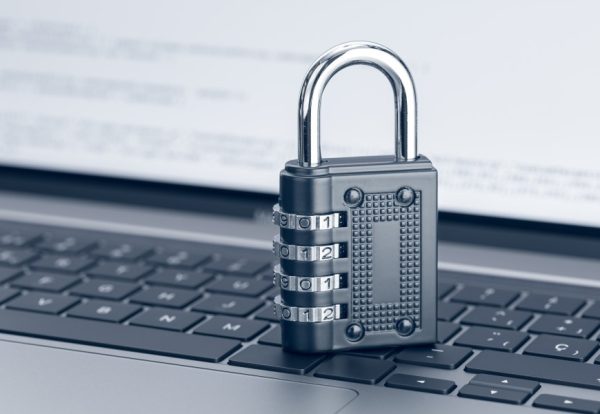Top 10 Cybersecurity Threats to Watch Out for in 2024
Organizations in the digital world face an extensive range of cybersecurity threats that are getting more complicated and sophisticated every year. To protect valuable assets and keep a strong security position, it is essential to identify emerging methods that exploit vulnerabilities and jeopardize the security of people and organizations.
As 2024 approaches, it’s important to keep ahead of the trends by being aware of the top 10 cybersecurity threats to watch out for.
Key statistics of cybersecurity attacks
As per Cost of a Data Breach Report 2023, in the year 2023, the average cost of data breaches caused by lost or compromised credentials was $4.45 million, which has increased by 15.3% from USD 3.86 million in the 2020. With almost 3.4 billion spam emails sent out every day, phishing appears to be the most frequent cyberattack.
Top 10 potential emerging cybersecurity threats and trends
1. Advanced Persistent Threats (APTs): The term Advanced Persistent Threats (APTs) describes a cyberattack in which a hacker or group of hackers maintains an illicit presence on a network for a long time to mine sensitive data. In this, the attacker mostly targets government networks or large enterprises based on extensive research. As per Statista, the APT protection market is predicted to exceed $15 billion by 2026. It has vast consequences, including-
- Compromised sensitive data like user private data
- Theft of intellectual property such as trade secrets or patents
- Cyber espionage
- Destroying critical company infrastructure like databases
2. Ransomware: Ransomware is a kind of malware that encrypts files and systems using an encryption mechanism that are impossible to decrypt without the right decryption key. According to the Verizon Data Breach Investigations Report, ransomware maintains its position as one of the predominant action types observed in breaches. Although it did not experience growth, it remained statistically stable at 24% in the year 2023. Ransomware is prevalent across organizations of varying sizes and industries. In June, 2023, Oregon Department of Transportation experienced a significant breach that impacted the Oregon Driver and Motor Vehicles division, affecting an estimated 3.5 million Oregon residents. The breach linked to the MOVEit attacks, known for their global impact, underscores the vulnerability of even well-established government systems.
A notable Ransomware trend, Double-Extortion has emerged where the attackers not only encrypt victims’ files, but also threaten to reveal important information if a ransom is not paid. This two-pronged strategy raises the financial and reputational costs for targeted organizations from ransomware attacks.
3. Internet of Things Vulnerabilities: The Internet of Things refers to a vast network of connected devices that exchange data with other devices, embedded with software, sensors, and other technologies. It is continuously evolving and expanding, making the intersection of IoT and cybersecurity critical in today’s world. Credential-based attacks and man-in-the-middle (MITM) attacks are some attacks directed at IoT devices. It requires a holistic and proactive approach to continuous monitoring.
4. Cloud Security Challenges: There has been a rise in the significance of security issues including data loss, confidentiality, and inadvertent disclosure of credentials as businesses have shifted more of their operations to the cloud. Due to the proliferation of cyber threats over the last several years, effective security measures are now crucial for maintaining the smooth operation of a business. Wrong configuration, unauthorized access, and insecure interfaces are the main cloud security threats. Threat monitoring, Data privacy & compliance, End-to-end Encryption, and identity access management are the best practices to secure cloud-native apps and stored data.
5. Supply Chain Attacks: Supply chain attacks occur when a third-party supplier compromises your data and systems to enter your digital infrastructure. A 2023 supply chain assault named “Operation Shadow Hammer” targeted millions of ASUS devices’ Live Update utility. Thousands of computers worldwide were compromised by cybercriminals planting malware in tool updates. After months, security researchers discovered this sophisticated attack.
The severity of attacks on the Software Supply Chain is expected to rise in 2023, according to a report by Spiceworks. Ways to prevent supply chain attacks are as follows:
- Maintain an effective software asset inventory
- Audit unauthorized shadow digital infrastructure.
- Endpoint detection and response options
- Evaluation of suppliers’ security
- Validate supplier risk continuously
- Keep only authorized programs running with robust code integrity rule
6. AI-Driven Attacks: The increasing use of AI and ML in both offensive and defensive cyber operations implies that AI-powered attacks will be a growing concern in the future. Cybercriminals use artificial intelligence in a variety of ways, including- AI-powered malware, social engineering, automated phishing, Zero-day attacks, and Deepfake attacks. Artificial intelligence in cyber security is essential for improving the IT security performance of an enterprise. To reduce the likelihood of data breaches, prioritize risks, direct incident response, and spot malware attacks in advance, this tool offers analysis and threat identification.
7. Zero-Day Vulnerabilities: Zero-day vulnerability is a security vulnerability that is exploited by hackers before the corresponding software is fixed. MSMEs, Government organizations, hardware devices, etc are potential targets. Some of the most common vulnerabilities hackers want to exploit and launch a zero-day attack on are:
- Web browsers
- IoT devices
- Operating systems
- Open-source components
- Office applications
8. Insider Threats and Employee Training: An insider threat is a complex and ever-changing threat to both the public and private spheres of all vital infrastructures. Different types of insider threats include espionage, secret agent activities, theft, and cybercrimes. In a study of CISOs from across the globe conducted in 2023, 33% said that e-mail fraud was one of the three most dangerous cybersecurity threats they faced. McKinsey & Company reports that although malicious root causes accounted for 38% of insider threats, financial stress was responsible for 15% of insider threats. Cybercriminals often use employees as a weapon against their own companies. Employees who aren’t aware of the dangers of insider threats may unintentionally put the company at risk.
10. Distributed denial-of-service (DDoS) Attacks: Distributed denial-of-service attacks overwhelm, to target a server, service, or network, with Internet traffic to interrupt its usual traffic. DDoS assaults work by sending attack packets from several infected computers. Essentially, a DDoS assault is like an unanticipated traffic jam on the highway, stopping ordinary traffic from reaching its destination. What makes this incident stand out is the unprecedented scale it reached. Peaking in August, these attacks dwarfed any Layer 7 attacks previously reported, with the largest assault surpassing a staggering 398 million requests per second. The sheer magnitude of the HTTP/2-based DDoS attack caught many off-guard, as Google services and Cloud customers became the unexpected targets. Unlike typical DDoS attacks, this novel assault leveraged the HTTP/2 protocol, presenting a new and sophisticated challenge for cybersecurity professionals.
These 2024 cybersecurity trends will make organizations dread stacking security. Infrastructure security is important in most organizations. As organizations rely more on digital infrastructure, the need to safeguard critical assets becomes paramount. ANZEN Technologies Pvt. Ltd. provides tailored solutions addressing the unique challenges of protecting digital infrastructure, providing a robust defense against cyber threats. By providing comprehensive solutions that cover every aspect of cybersecurity, they ensure that no vulnerability goes unnoticed. ANZEN Technologies Pvt. Ltd. stands as a reliable ally, offering innovative solutions and consultation to protect organizations from the ever-evolving threat landscape. In an era where cybersecurity is not just a necessity but a strategic advantage, choosing ANZEN is a step towards securing a digital future





